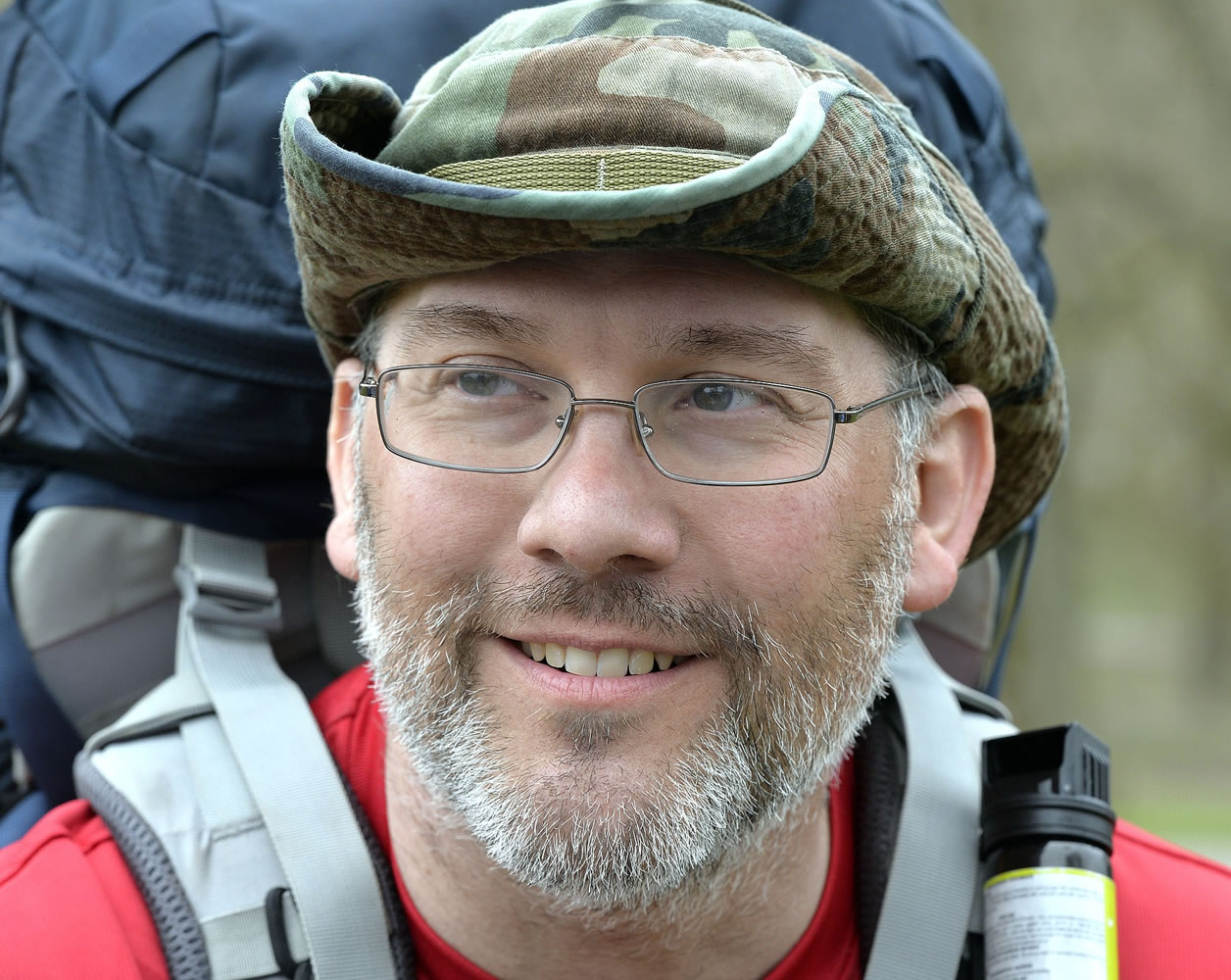FORT BOONESBOROUGH, Ky. — Keeping up a quick pace to the finish line, Curtis Penix didn’t look like someone who had walked nearly 240 miles in the footsteps of frontiersman Daniel Boone, an arduous trip through the Appalachian terrain that was inspired by his own family’s pioneering roots in the Kentucky wilderness.
The Michigan steel mill worker, toting a 40-pound backpack, completed his 16-day journey Thursday. It started in Tennessee, wound into Virginia and took him to hallowed ground in Kentucky — the place where Fort Boonesborough was built in 1775 after Boone and his band of ax men had carved out Boone Trace. The path became an important early artery for settlers heading westward.
“I can’t wait to sit down,” the 46-year-old Penix said after being greeted by family and other supporters. “I haven’t had a soft chair in a long time. Physically, I feel fine. I feel like any other day I would get up for work. … I could keep going if I wanted, but I don’t want to.”
Amber Penix embraced her father and then teasingly told him: “You don’t smell too bad.”
During his adventure, Penix slept outside, crossed rivers on foot, trudged through rain and mud and endured blistered feet.
He started his journey on March 10 near Kingsport, Tenn. — the same place where Boone’s group left in March 1775. Penix followed the famous frontiersman’s route into Virginia and through Cumberland Gap into Kentucky.
After five days of traveling alone, Penix was joined by walking companion Givan Fox, 42, near the Virginia-Kentucky border. Fox’s father, John Fox, is president of Friends of Boone Trace, a nonprofit group that hopes to preserve the historic route as a hiking trail and a memorial to the pioneers.
“The American dream started on this road,” Penix said.
His trip was inspired by his fifth-great grandfather, Joshua Penix, who followed Boone Trace on his way to Fort Boonesborough.
“This is where Grandpa Joshua came in 1779,” Penix said. “So he would have been right here somewhere in this little area.”
His ancestor did quite well for himself in the frontier. He eventually acquired 1,400 acres near Paris in central Kentucky, but later parceled it off and sold it, Penix said. Joshua Penix eventually became a plantation owner in Virginia.
Among those welcoming Penix and Givan Fox on their arrival was Donna Jones, who said some of her ancestors were among the settlers at Fort Boonesborough. Their names are among those etched on a monument honoring the pioneers.
“Anybody that would spend this many days to get here certainly has an understanding of what our ancestors did to make all of this available to us now,” Jones said. “I just think that’s a wonderful for someone to do, to raise our level of awareness.”
At the start, Penix said, he was determined to “rough it,” just like the pioneers. On his first day, he waded across seven streams and rivers on foot, including one that was knee deep. “I quickly found out that by getting your feet wet and then continuing to walk, you could get what the pioneers called ‘scalded feet,’ ” he said.
Turning point
The foot blisters were enough to dissuade him from river crossings and take the bridges instead.
He endured steady rain during his first four days. At the end of one day, he started shivering uncontrollably, he said.
“Rather than end my trip there, I bit the bullet and I decided to stop in at a motel and dry off and warm up,” he said. “That was kind of a low point. I had tried to do this … just like Grandpa Joshua did. Sleeping under the stars, fording the rivers, carrying all my own food.”
His attitude changed after a park ranger told him the pioneers stopped at settlements for food, warm places to sleep and to resupply before reaching the Kentucky wilderness. After that, he said, he accepted the generosity from people offering meals and places to sleep, including carports and garages.
With help from groups including Friends of the Boone Trace, Penix charted the most historically accurate route for his journey. Penix said he got lost just once, on a mountainside in Virginia.
He estimated about 60 percent of his trip was on roads and the rest through woodlands or fields. While the early pioneers faced dangers from Indians, Penix’s biggest threat was vehicles on roads that lacked shoulders for him and Fox to walk on.
“When a large truck would come by, we had this little technique where we would lean (on their walking sticks) into the ditch and away from the road, just long enough for them to go by, and then we’d pop back out on the road,” he said.
Penix planned to visit Boone’s grave in Kentucky’s capital city of Frankfort and then return home to Monroe, Mich.



